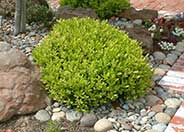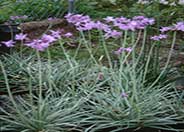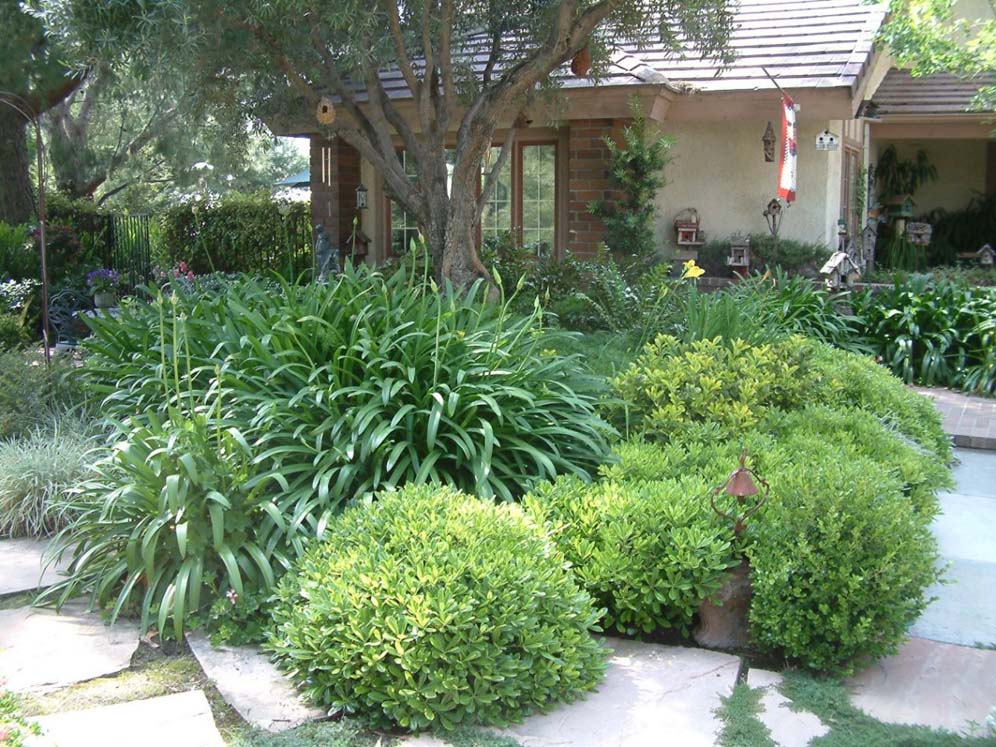
Common name:Lily of the Nile
Botanical name:Agapanthus africanus
This evergreen groundcover/shrub will grow about 3' tall and has large green leaves with blue flowers ( there is also a white variety) that bloom in spring and summer. It will grow in all soils but prefers loam soil.

Common name:Wheeler's Dwarf Pittosporum
Botanical name:Pittosporum tobira 'Wheeler's Dwarf'
This handsome dwarf form of the Pittosporum tobira grows into a low, dense mound that is covered with glossy, evergreen foliage.

Common name:Silver Lace Society Garlic
Botanical name:Tulbaghia violacea 'Silver Lace'
This evergreen perennial has 1'-2' long stems with white, margined leaves and rosy/lavender/pink flowers that bloom in spring and summer.

Common name:Woolly Yarrow
Botanical name:Achillea tomentosa
Short stems of flat-topped golden flowers accent the deep green, woolly, fern-like leaves of the mat formed by this plant. It is a fine performer in rock gardens and at the front of herbaceous perennial borders. Yarrow propagate easily from rooted stems or division, which should be performed in the early spring or fall. Following bloom, dead head the plant and divide the clumps when it appears crowded.

Common name:Olive
Botanical name:Olea europaea
This broad tree will grow to 40' tall and has small, gray green leaves with fleshy black fruit that appears in fall.
Sustainable Landscape Renovation
We can identify at least 11 steps of sustainable landscape renovation for consideration. They include critical design, installation and maintenance practices that conform to good principles of appropriate horticulture.
Click in the green box for more information
| Designer: Nan Simonsen Nanscapes | Agapanthus about to Bloom |
Photographer: GardenSoft |
Soils and Compost:
Incorporate compost 6" into your soil to retain water, reduce compaction, feed earthworms, and provide valuable nutrients to your plants.
Water Saving Tip:
Mulching and adding compost to soil can minimize evaporation and help soil absorb and store water.
Integrated Pest Management:
Drip and other smart irrigation delivers water directly to roots, allowing no excess water for weeds.

